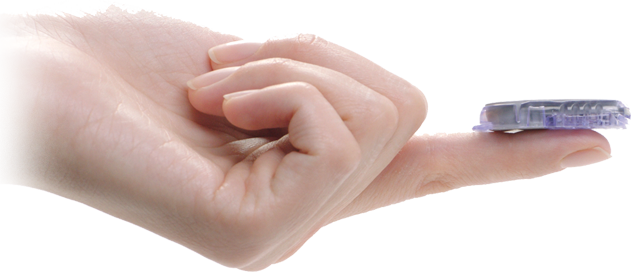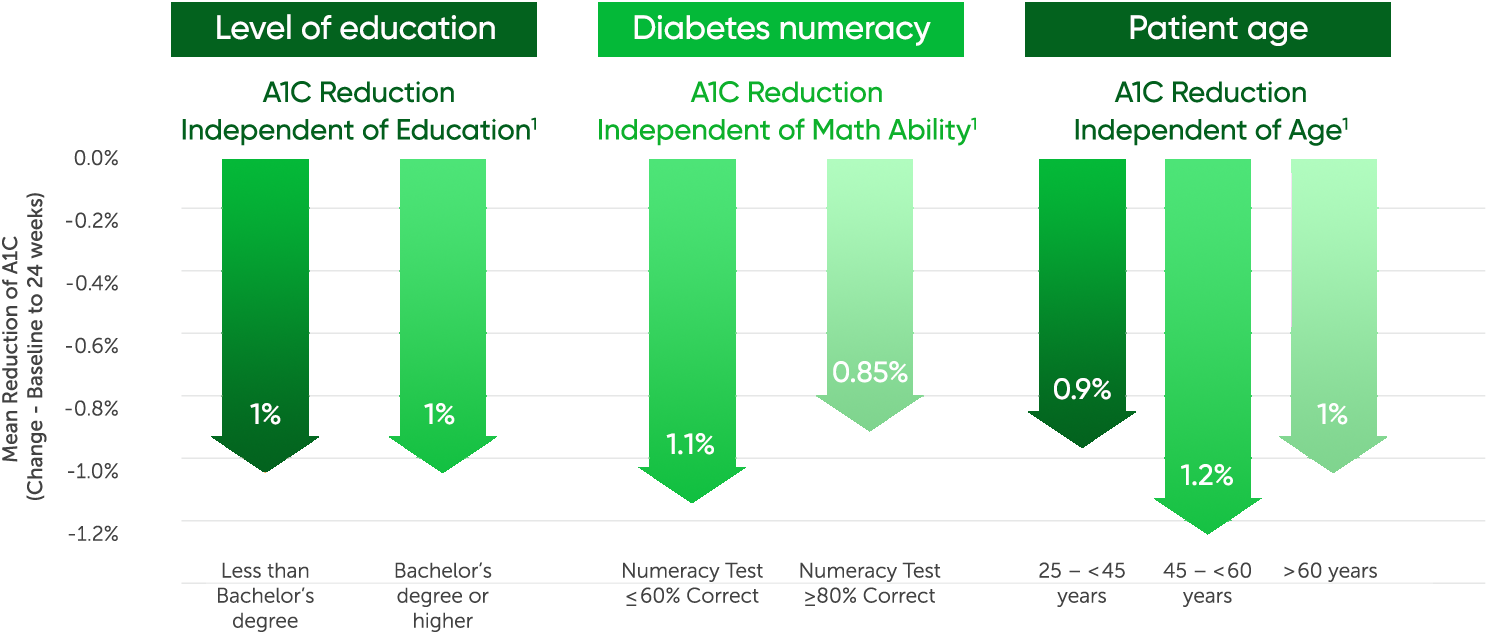Despite their best intentions and efforts, many patients with diabetes struggle to maintain optimal glycemic control.
Dexcom CGM can benefit the following:
- Patients with Type 1 or Type 2 diabetes on mealtime insulin,
- Patients on multiple daily injections (MDI) or an insulin pump,
- Patients at risk for hypoglycemia,
- Patients who may experience hypoglycemia unawareness,
- Patients who want a better way to meet their glycemic goals,
- Patients experiencing excessive glycemic variability, or
- Patients who may benefit from sharing their glucose data with a loved one (e.g., children, older adults, etc.)

More insight than monitoring alone
Unlike a single reading from a blood glucose meter, continuous glucose monitoring (CGM) systems provide patients with continuous information every 5 minutes. CGM gives patients their current glucose level, speed and direction of glucose change, giving them timely feedback necessary for nutrition, activity, and insulin requirements.
CGM is a powerful management tool that can inform better diabetes treatment decisions, and ultimately leads to tighter glycemic control than using a blood glucose meter alone.1

CGM Usage in MDI Patients
There are commonly held beliefs in the diabetes community that patients on multiple daily injections (MDI) won’t benefit from CGM because they either wouldn't be willing to wear a CGM device or they would find it too complicated to use.
The DIaMonD study provides compelling evidence that challenged these misperceptions and showed that when using CGM, MDI patients experience significant A1C reductions regardless of education level, diabetes numeracy or age.2

Patients demonstrated significant A1C reductions (avg of 1%), regardless
of education level, diabetes numeracy, and age
1 Pettus J, Price DA, Edelman SV. Endocr Pract. 2015;1-25.
2 Beck RW, et al. JAMA 2017;317:371-78.
